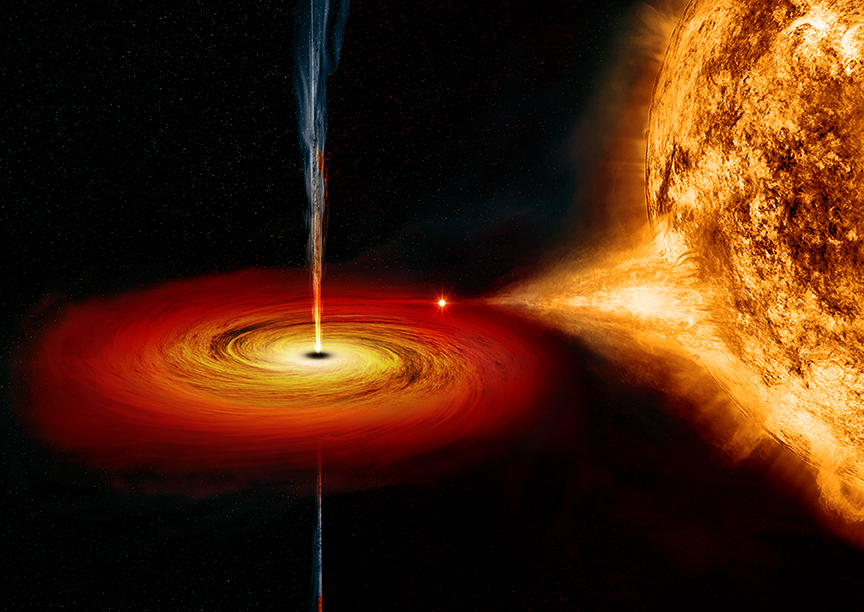
Einstein Was Right
The mechanism of black holes attracting matter from outside the event horizon has been a mystery for many years. However, a new study now sheds light on this mystery. Using X-ray data from an active black hole, Oxford University’s theoretical physicist Andrew Mummery and his team proved the existence of a “plunging region” where matter stops circling the black hole and falls straight down, plunging precipitously beyond the point of no return.
Einstein’s theory of gravity predicts that matter approaching a black hole at a certain distance cannot remain in a stable circular orbit and will fall straight into the black hole. This theory explains the twisted fabric of space-time around black holes. However, astrophysicists did not know whether they could observe this moment of plunging.
“Einstein’s theory predicted that this final plunge would exist, but this is the first time we have been able to demonstrate it happening,” said Andrew Mummery, “Think of it like a river turning into a waterfall – hitherto, we have been looking at the river. This is our first sight of the waterfall”.
Instead of moving in a straight line, matter being sucked into a black hole spins like a vortex. The analogy is so apt that scientists use swirling water vortices to study the environment of black holes. However, black holes themselves are extremely difficult to study because the space-time around them is extremely warped.
The work of Mummery and his team began by developing numerical simulations and models to reveal the light emitted by the plunging region. It was then necessary to match this emission with observational evidence. They focused their research on a black hole in a system called MAXI J1820+070, about 10,000 light-years away. This system contained a black hole about 8.5 times the mass of the Sun and a binary companion star. The black hole would regularly produce X-ray bursts by pulling matter from this companion star.
While analysing one such flare from 2018, researchers focused on an unexplained glow detected during this outburst. A 2020 study had suggested that this glow could originate from the innermost stable orbital region, the plunging region. Mummery and his team carefully analysed this glow and found that it matched the emission from their simulations.
This finding conclusively proved the existence of the plunging region and provided a new method for studying the extreme gravitational regime just outside a black hole’s event horizon. “What is exciting is that there are many black holes in the galaxy, and we now have a powerful new technique for using them to study the strongest known gravitational fields,” said Mummery. This work allows us to probe the final region around black holes and gives us a full understanding of the gravitational force. This last drop of plasma at the edge of a black hole shows how matter responds most strongly to a gravitational force.
This important discovery is a major step towards a better understanding of black holes and gravity in general. Many black holes in our galaxy will be studied with this new technique, allowing us to learn more about the most extreme gravitational fields in the universe.
REFERENCES
- 1. https://www.sciencealert.com/physicists-finally-confirm-einsteins-stunning-prediction-about-black-holes
- 2. https://phys.org/news/2024-05-maxi-j1820070-einstein-plunges-black.html
